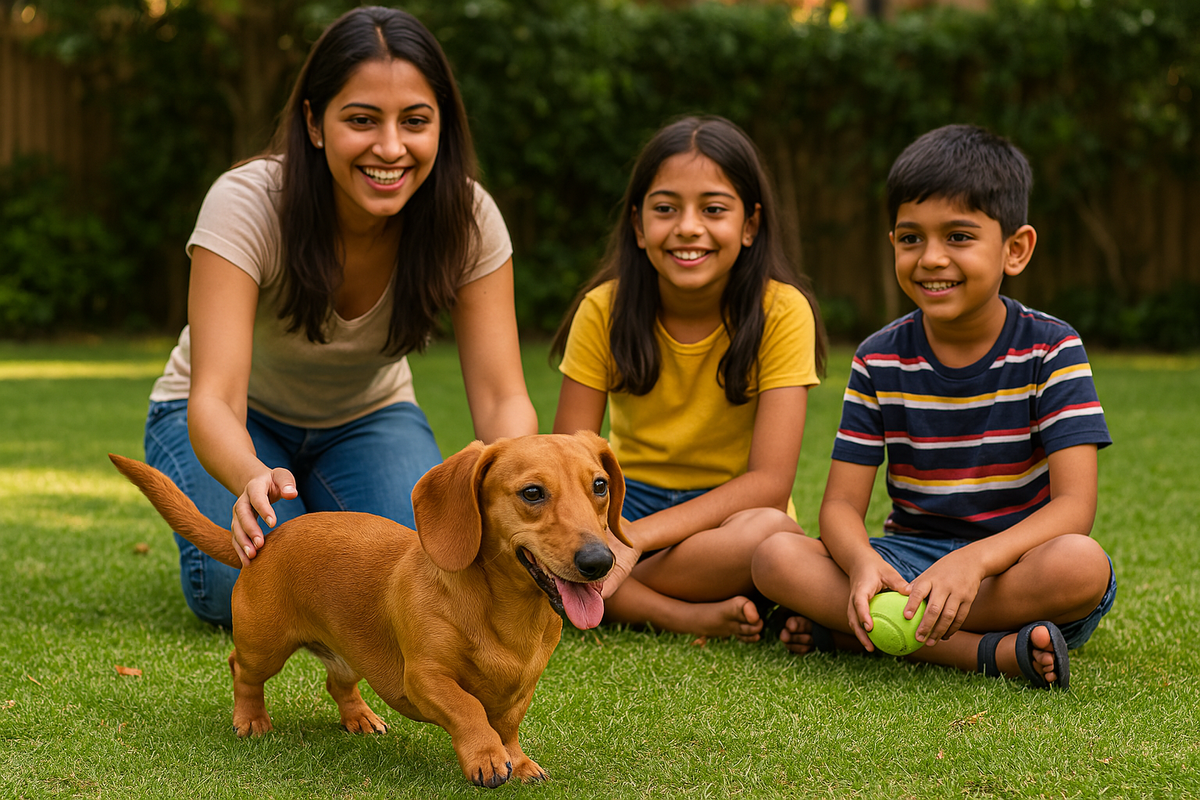Dachshund - A Complete Guide for Dog Lovers 🐾

Among the many adorable and charming dog breeds in the world, the Dachshund stands out for its unique appearance and vibrant personality. With their elongated bodies, short legs, and bold attitudes, Dachshunds have earned many nicknames, including “wiener dog” or “sausage dog.” 🌭
In this guide, we will explore everything you need to know about Dachshunds, from their history and personality to care tips, health, and their growing popularity among Dog Breeds in India. 🇮🇳🐕
Origin and History 📜
The Dachshund originates from Germany and was bred over 300 years ago for hunting badgers. In fact, the name “Dachshund” literally means “badger dog” in German. Their long bodies and sharp noses made them ideal for burrowing into tunnels and chasing out small animals. Over time, these brave and determined dogs made their way into homes as loving companions.
Physical Features 🐕
Dachshunds are instantly recognizable due to their long torso and stubby legs. They come in three coat types: smooth, long-haired, and wire-haired. Their colors range from black and tan to red, cream, chocolate, and even dappled combinations.
- Height: 5-9 inches
- Weight: 7-15 kg (Miniature and Standard sizes)
- Lifespan: 12-16 years
Personality Traits 😄
Despite their small size, Dachshunds are full of personality! They are known to be:
- 🐶 Brave – Fearless and ready to protect their home.
- 🎾 Playful – Love toys, games, and interactive activities.
- 🧠 Intelligent – Quick learners but sometimes a bit stubborn.
- ❤️ Loyal – Form strong bonds with their family members.
- 📢 Vocal – Known to bark to alert owners of strangers.
Why Are Dachshunds Popular in India? 🇮🇳
With urban living on the rise, smaller dog breeds like Dachshunds are becoming more common in Indian households. They are great for apartments and don't require excessive grooming. As highlighted in this article on Dog Breeds in India, Dachshunds are ideal for nuclear families and individuals who want a manageable yet energetic pet.
Training Tips 🎓
Training a Dachshund can be a rewarding experience, though a bit challenging. Due to their independent streak, they may resist commands unless properly motivated. Use positive reinforcement such as treats, toys, and praise. Early socialization with other dogs and people will help your Dachshund become a well-rounded companion.
Health and Wellness 🩺
Though generally healthy, Dachshunds are prone to certain conditions due to their unique build:
- IVDD (Intervertebral Disc Disease): A spine condition that can cause pain and paralysis if not treated.
- Obesity: Their small legs cannot support extra weight easily.
- Dental issues: Regular brushing is essential.
- Heart disease and diabetes: Especially common in older dogs.
Regular vet checkups, a proper diet, and moderate exercise can help maintain your Dachshund's health and longevity. 🐾
Grooming Needs 🧼
Grooming requirements vary depending on the coat type:
- Smooth-Coated: Needs minimal brushing; a wipe-down once a week is enough.
- Long-Haired: Requires regular brushing to prevent tangles.
- Wire-Haired: Needs occasional trimming and hand-stripping.
Don’t forget nail trimming, ear cleaning, and regular baths for a well-groomed and happy Dachshund. ✂️🛁
Feeding and Nutrition 🍗🥦
Feed your Dachshund a high-quality, balanced diet that suits their age and activity level. Avoid overfeeding and table scraps, as Dachshunds gain weight easily. Portion control is key! You can also discuss with your vet about the best food brands and portion sizes for your dog.
Fun Activities and Exercise 🐾⚽
While they may not need marathon runs, Dachshunds still enjoy playtime and walks. Daily strolls, indoor play sessions, and mental games like treat puzzles help keep them sharp and fit. Just be careful with stair climbing and jumping on furniture as it can strain their long spine.
Is a Dachshund Right for You? 🤔
If you’re looking for a loyal, fun-loving, and compact companion who’s brave enough to take on the world, the Dachshund might be your perfect match. They are ideal for singles, couples, and families with older children. First-time dog owners can also consider this breed with some basic guidance and commitment.
Conclusion 🎉
Dachshunds may be small, but they have giant personalities! Their quirky charm, loyalty, and spunky nature make them one of the most loved dog breeds globally. Whether you're living in a cozy apartment or a large home, a Dachshund can bring joy, laughter, and companionship to your life. 🐶💖
Before adopting, always consult breeders or shelters and make sure you're ready for the responsibility. With proper love and care, your Dachshund will be a faithful buddy for many years to come! 🏡🐾





